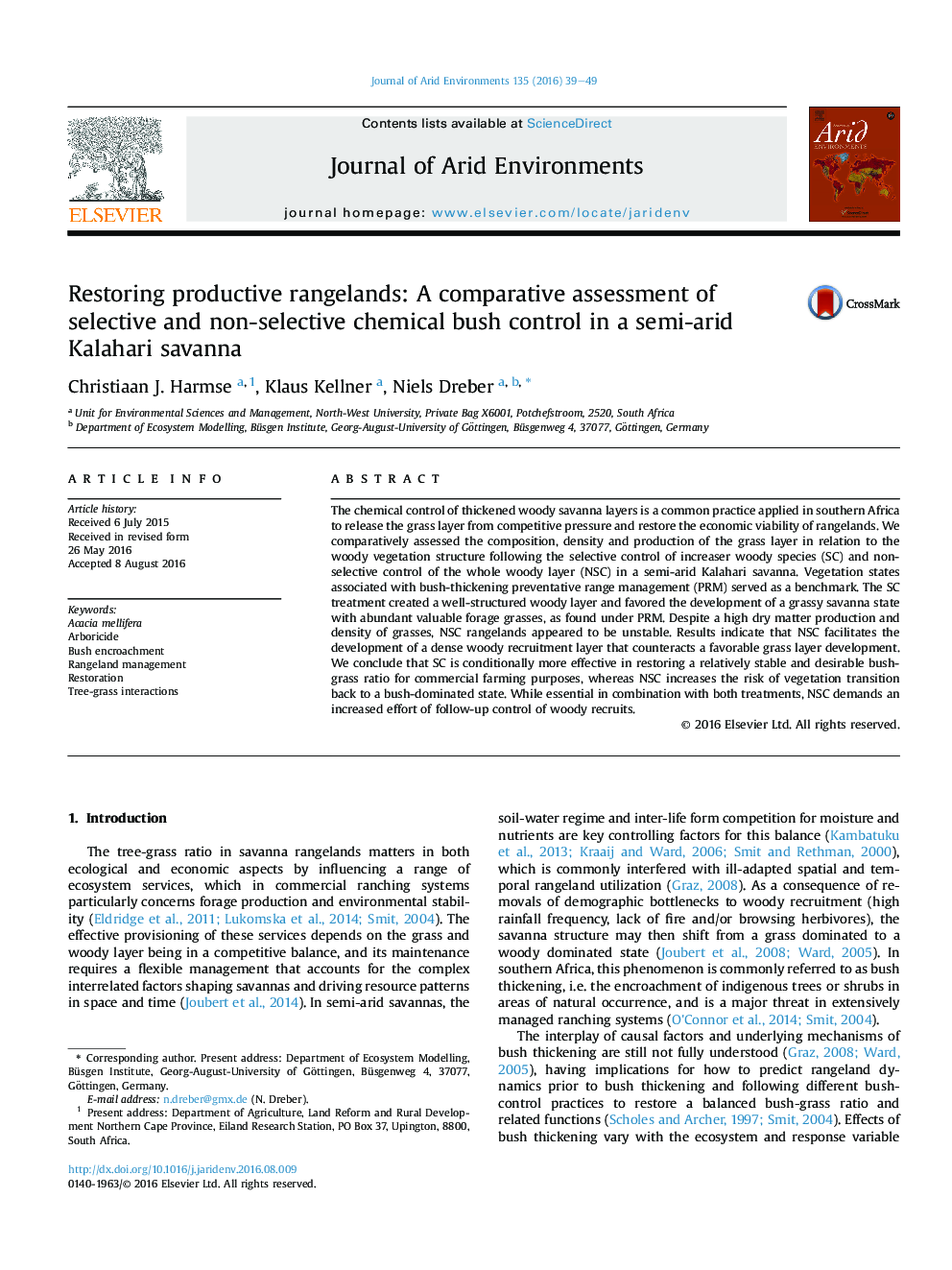| Article ID | Journal | Published Year | Pages | File Type |
|---|---|---|---|---|
| 4392670 | Journal of Arid Environments | 2016 | 11 Pages |
•Type of chemical bush control affects grass layer development.•Grass composition varies with demographic structure of the woody layer.•Non-selective bush control increases risk of unfavorable vegetation transitions.•Selective bush control facilitates development of favorable grassy states.•Results of selective bush control are similar to such of bush-thickening preventative range management.
The chemical control of thickened woody savanna layers is a common practice applied in southern Africa to release the grass layer from competitive pressure and restore the economic viability of rangelands. We comparatively assessed the composition, density and production of the grass layer in relation to the woody vegetation structure following the selective control of increaser woody species (SC) and non-selective control of the whole woody layer (NSC) in a semi-arid Kalahari savanna. Vegetation states associated with bush-thickening preventative range management (PRM) served as a benchmark. The SC treatment created a well-structured woody layer and favored the development of a grassy savanna state with abundant valuable forage grasses, as found under PRM. Despite a high dry matter production and density of grasses, NSC rangelands appeared to be unstable. Results indicate that NSC facilitates the development of a dense woody recruitment layer that counteracts a favorable grass layer development. We conclude that SC is conditionally more effective in restoring a relatively stable and desirable bush-grass ratio for commercial farming purposes, whereas NSC increases the risk of vegetation transition back to a bush-dominated state. While essential in combination with both treatments, NSC demands an increased effort of follow-up control of woody recruits.
